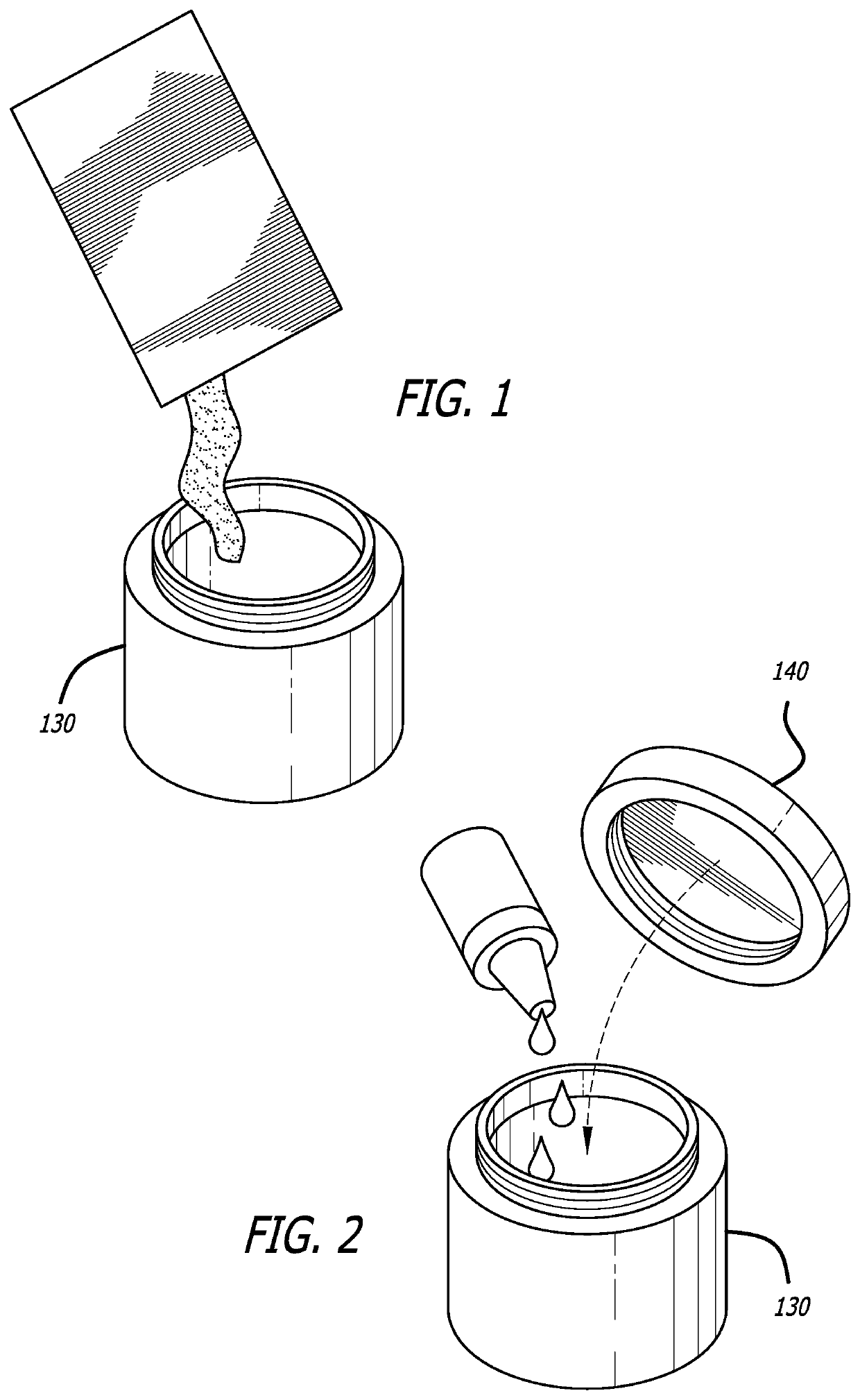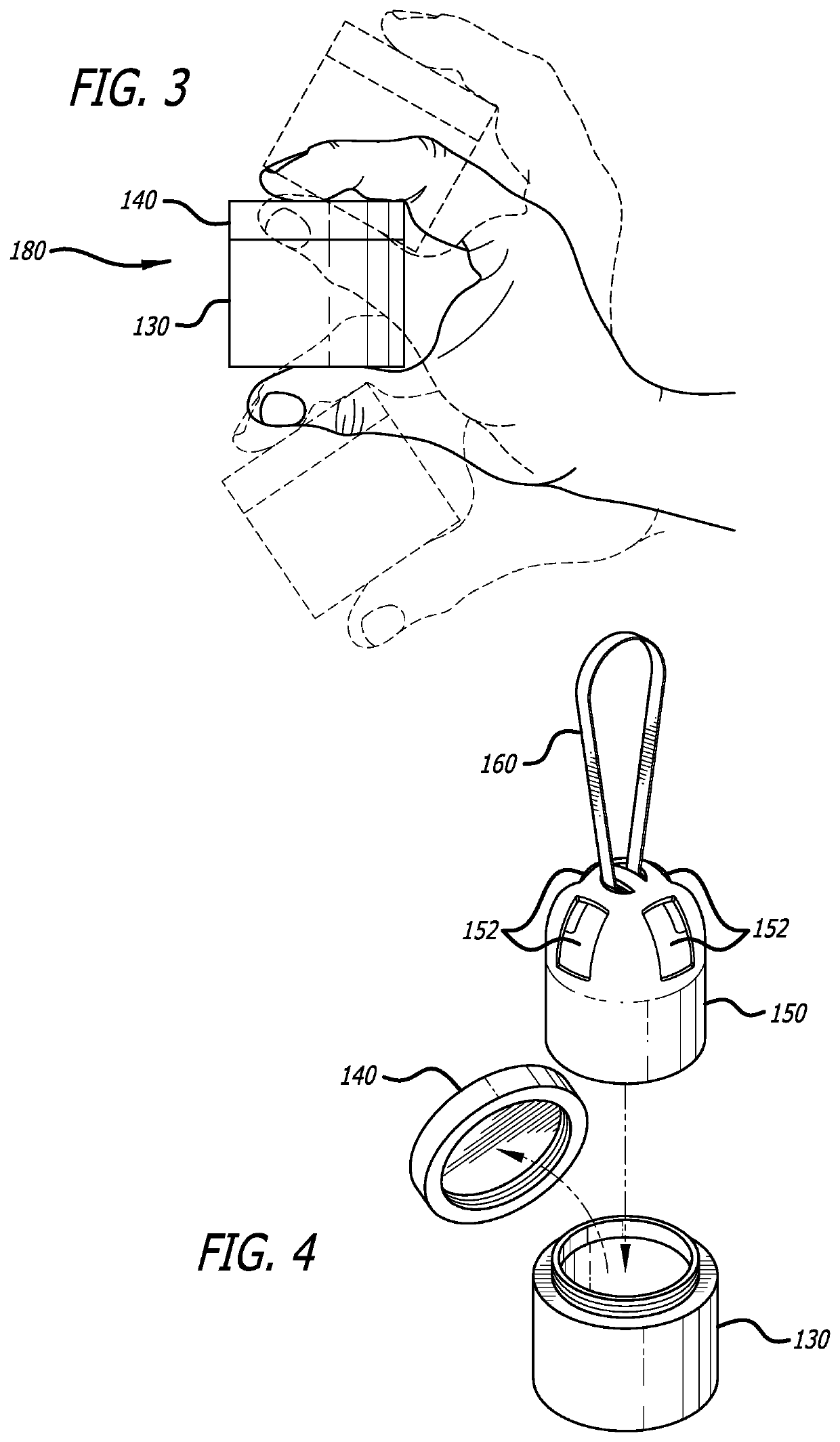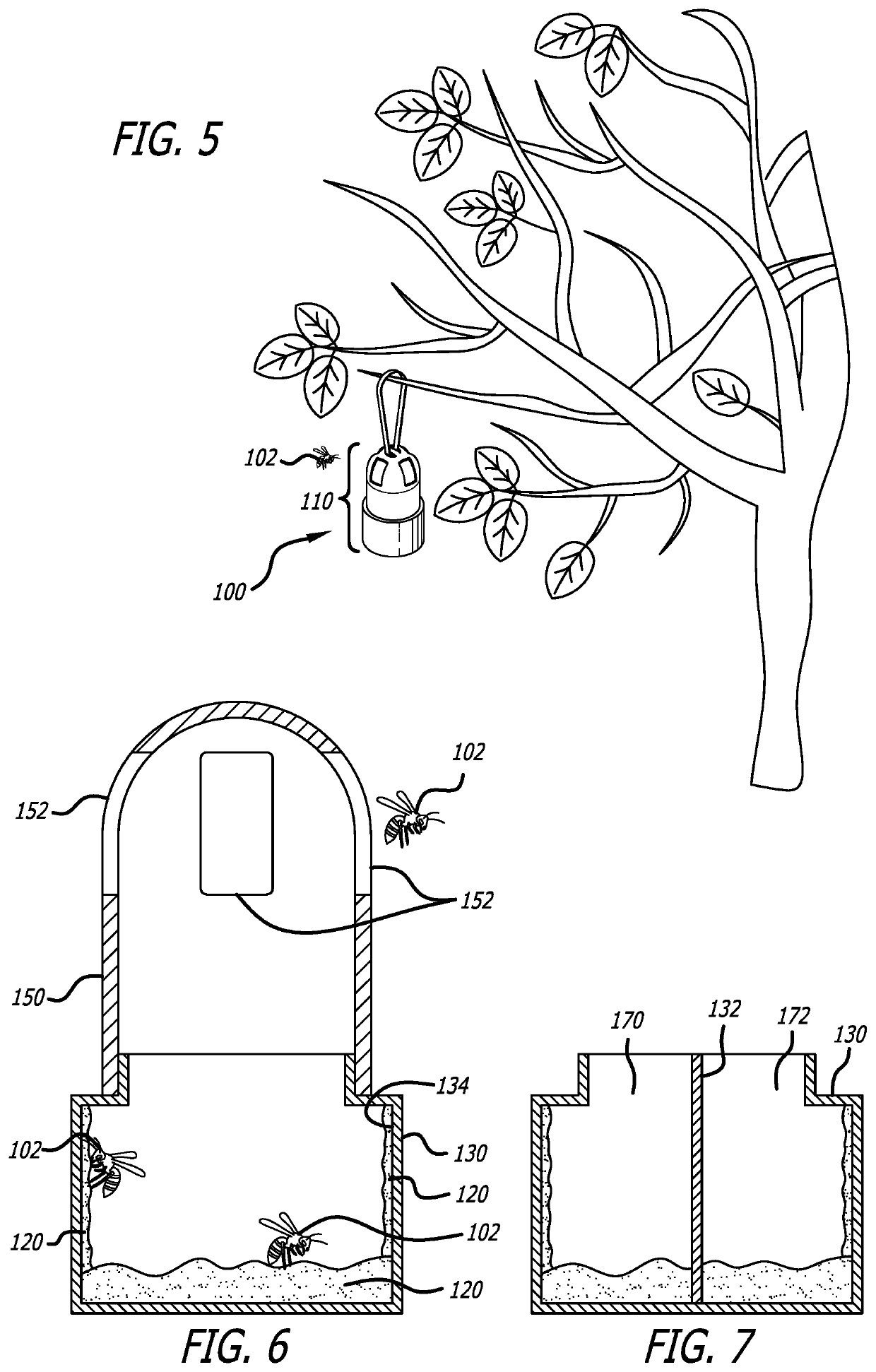Bait station for controlling insects such as yellow jackets
a technology for yellow jackets and bait stations, applied in the field of bait stations for controlling insects, can solve the problems of not being able to meet industry needs, unable to allow insects to take slow-acting bait back to the nest to destroy the other occupants of the nest, and unable to meet the needs of the industry. , to achieve the effect of simple and efficien
- Summary
- Abstract
- Description
- Claims
- Application Information
AI Technical Summary
Benefits of technology
Problems solved by technology
Method used
Image
Examples
Embodiment Construction
[0025]In the following description of the present invention reference is made to the exemplary embodiments illustrating the principles of the present invention and how it is practiced. Other embodiments will be utilized to practice the present invention and structural and functional changes will be made thereto without departing from the scope of the present invention.
[0026]The present invention is a bait station 100 for controlling insects 102, such as yellowjackets and other wasps. FIGS. 1-5 show an exemplary configuration of such a bait station 100, in varying stages of preparation for deployment.
[0027]FIG. 4 and FIG. 5 are illustrations of the various structural elements of a bait station 100 according to one embodiment of the present invention. The bait station 100 includes a housing 110 within which insects 102 come into contact with an insecticide-laced bait 120. The bait station 100 includes a bottom vessel 130, and two removable top portions—a mixing cap 140, and an ingress...
PUM
 Login to View More
Login to View More Abstract
Description
Claims
Application Information
 Login to View More
Login to View More - R&D
- Intellectual Property
- Life Sciences
- Materials
- Tech Scout
- Unparalleled Data Quality
- Higher Quality Content
- 60% Fewer Hallucinations
Browse by: Latest US Patents, China's latest patents, Technical Efficacy Thesaurus, Application Domain, Technology Topic, Popular Technical Reports.
© 2025 PatSnap. All rights reserved.Legal|Privacy policy|Modern Slavery Act Transparency Statement|Sitemap|About US| Contact US: help@patsnap.com



